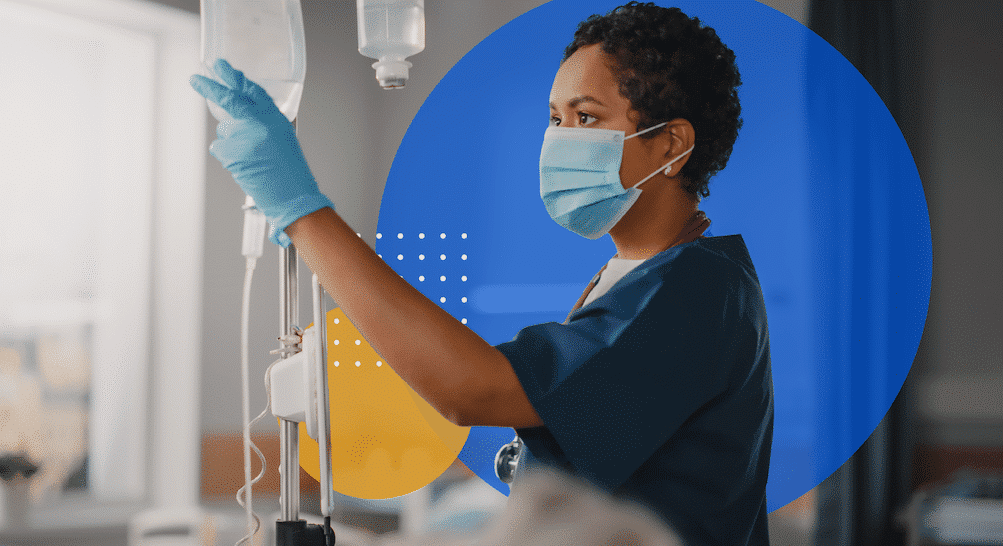Blog
Top 5 Reasons Why Home Care Agencies Must Achieve Interoperability

The need for electronic health record (EHR) interoperability within healthcare has been an accelerating area of focus for some time. The full spectrum of a client’s care team working in tandem generates better outcomes – and such visibility can only be achieved when all providers share the same real-time information about a client’s status and needs.
This has taken on heightened importance during COVID-19. Since last March, home health care agencies have served as front-line workers during a pandemic – an urgent new role that also lays bare the issues of a largely disconnected system. At a time when patients flow from hospitals and urgent care facilities to home and back again, it is imperative that agencies achieve interoperability.
It is simply vital now for care organizations to operate as a linked community. Even beyond the pandemic, agencies must have the capability to connect to information systems across organizations to fluidly exchange both individual and population health data.
Interoperability is the foundation of how agencies can continue delivering high quality, personalized care even when the world’s turned upside down. When the spectrum of a client’s care team shares real-time information, that client’s needs are clearly understood, resulting in fewer interventions and a better quality of life.
Why Interoperability Is Important in Home Care
If a home care agency has information-rich systems that work with, rather than compete with, other systems, it achieves interoperability.
Here are five ways EHR interoperability can empower your agency:
1. Streamline referrals and intake: Managing a client’s information, onboarding them, and following through on an individualized care plan is a multi-step process. If referral technology is connected right in to an agency’s back-end, this becomes vastly more efficient. Having a robust e-referral program is a prime way to respond quickly and engage new clients, update services and client records directly from the source, streamline care coordination, and implement automated updates and upgrades. Don’t take it from us. These are current priorities among home care partners: automated referrals are number one in importance, and six of 10 referral sources said they would switch their post-acute care partner if it meant a boost in interoperability.
2. Boost patient safety: Medical errors are an ongoing problem, accounting for nearly 10 percent of deaths in the U.S.EHRs are vital to a home care agency’s ability to be a key part of the ecosystem of coordinated care, ensuring a complete picture of a patient’s health status follows them at all times. It’s imperative that home care agencies gather accurate, updated client health data that can be used to make informed clinical decisions. This keeps their clients safe not only at home (which is always the focus) but in any interactions with their local health-care system. Plus: interoperable systems also reduce the need to manually complete multiple forms, thereby reducing documentation errors.
3. Manage risk: The ability to have seamless access to client data allows users to recognize risk factor conditions and determine potential risk mitigation, while also enhancing patient data security overall. Such data interoperability offers the ease of mind that patient information is secured. Administrators can manage user access rights and track their logins, thereby securing patient data and protecting privacy.
4. Ensure visibility and connectivity: As we’ve outlined above, having access to critical data from a variety of sources across a client’s health care journey is more important than ever when it comes to providing quality care. Ensuring care providers have the full spectrum of a client’s care history sets everyone up for success.
5. Promote client satisfaction: Much of this leads to an important factor for any agency – keeping clients satisfied. Ensuring information follows clients wherever they go gives them a sense of being well managed, and also reduces the need for them to repeat their care history and current needs to providers over and over again, a major pain point for those needing regular appointments. This directly improves the quality of care and client experience.
How Can Agencies Achieve Greater EHR Interoperability?
While interoperability is a necessity for agencies, it is not always easy to implement. Statistics bear that out: a 2019 survey found that only about one-third of U.S. health-care institutions share health data fluidly with other institutions.
So what’s the main holdup? An obvious barrier is on the technological side. Home care agencies need a software platform that supports application program interfaces (APIs), which essentially are the tunnels that connect one system’s information to another. Legacy systems often have outdated processes that don’t easily facilitate interoperability.
The road to all of this is via technology that is flexible, which supports APIs so that an agency’s data and information links seamlessly to other care partners’ ecosystems.
Watch for our next article on interoperability that will explore that very topic.




